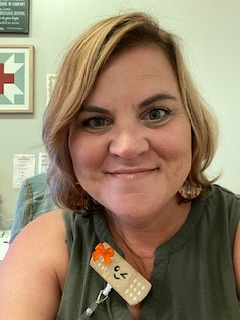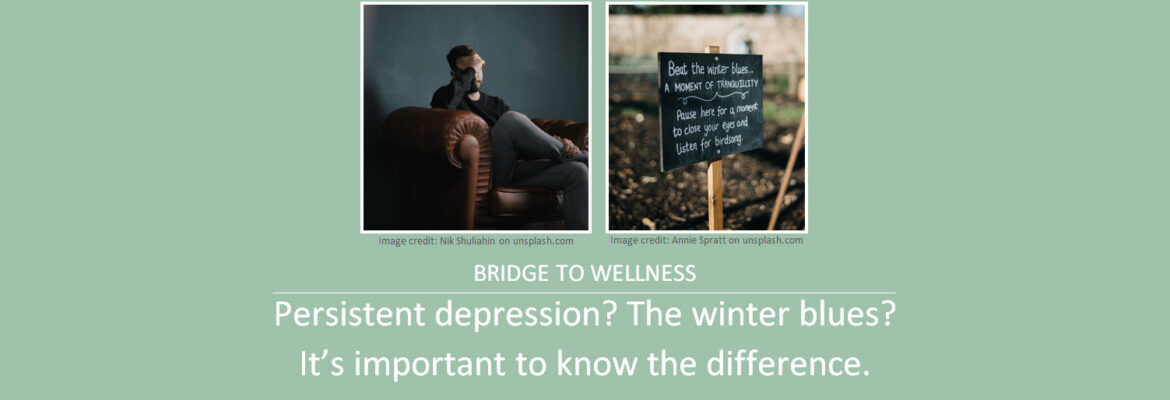Bridge to Wellness
Persistent depression? The winter blues? It’s important to know the difference.
by Jennifer Matthews, RN
[Ed. Note: On behalf of SCN and the Stockbridge Area Wellness Coalition, a special thank-you goes out to Emily Stewart and her team of writers who provided excellent Bridge to Wellness topics and tips in 2023. As this column begins its fourth year in the Stockbridge Community News, we’d like to welcome registered nurse Jennifer Matthews, who will be the Bridge to Wellness content creator for 2024.]
Winter can bring many wonderful things: beautiful snow, sparkling lights, and time with family and friends. Winter can also bring a not-so-wonderful lack of sunshine, shorter days, and cold and flu season. Along with changes in our environment, we can experience changes in mood.
If you find yourself experiencing persistent feelings of depression during the winter months, you could be experiencing seasonal affective disorder or SAD. SAD is a type of seasonal depression. It is a clinical diagnosis and can interfere with daily living for an extended period of time, affecting both how we think and how we feel. SAD is a depressive disorder; those suffering from SAD may need a physician consultation and, possibly, medication.
The winter blues, on the other hand, are common for many at this time of year, but they are temporary. Winter blues can usually be managed without a physician. The following steps can help people tackle the winter blues.
- Exercise: This can be challenging in the winter, especially if you don’t like to go out into the cold. Exercise causes the release of natural endorphins and can really help battle depression symptoms. So, bundle up for a walk, head to the gym, walk at a mall, or go to an indoor swimming pool whenever you can.
- Monitor Vitamin D: Oh, how we miss the sun in Michigan during the winter! The sun is our primary source of Vitamin D. Vitamin D is linked to emotional health and sharper thinking. Supplements may be needed if levels drop too low. Check with your doctor about whether a Vitamin D supplement is right for you.
- Introduce light therapy: The limited daylight in the winter can increase depression symptoms. Find opportunities to be in the sun by moving workout equipment or your daily work area near a window. Many great natural-light simulating lamps are available for purchase and can be used daily.
- Eat well: The holiday season brings lots of treats that are okay in moderation. However, ensuring that we are also getting good nutrients into our bodies each day promotes good health and emotional well-being. Make sure to eat fruits, vegetables, and whole grains daily.
- Be creative: Our outlooks can be improved by stimulating our senses through creative activities. Creative outlets look different for different people—some examples include painting, cooking, or tinkering. Being creative is a great way to feel accomplished and motivated.
- Nurture your spirit: Winter is the perfect time to slow down and rest. Activities such as reading, journaling, and watching inspirational programming can be a great way to find joy during the long winter months.
- See a therapist: Therapists can assist us in changing to a more positive perspective—one that can help us feel better both physically and mentally.
Remember, if you are having more severe symptoms of depression, you may need to see a doctor. The tips and tricks listed in this column can be useful, but seeing a physician can help you determine if further treatment for clinical depression is needed.

The winter blues are temporary and can usually be managed without a physician. Photo credit: Annie Spratt on unsplash.com

Seasonal affective disorder (SAD) involves a clinical diagnosis; those suffering from SAD may need a physician consultation and, possibly, medication. Photo credit: Nik Shuliahin on unsplash.com

Jennifer Matthews, RN
This column is sponsored by the Stockbridge Area Wellness Coalition. Jennifer Matthews, RN, is a registered nurse in the Stockbridge School System. She has worked as a community nurse for the last eight years and is an active volunteer within the Jackson County foster care system. Jen has a passion for helping individuals advocate for their health and learn to navigate the healthcare system.


